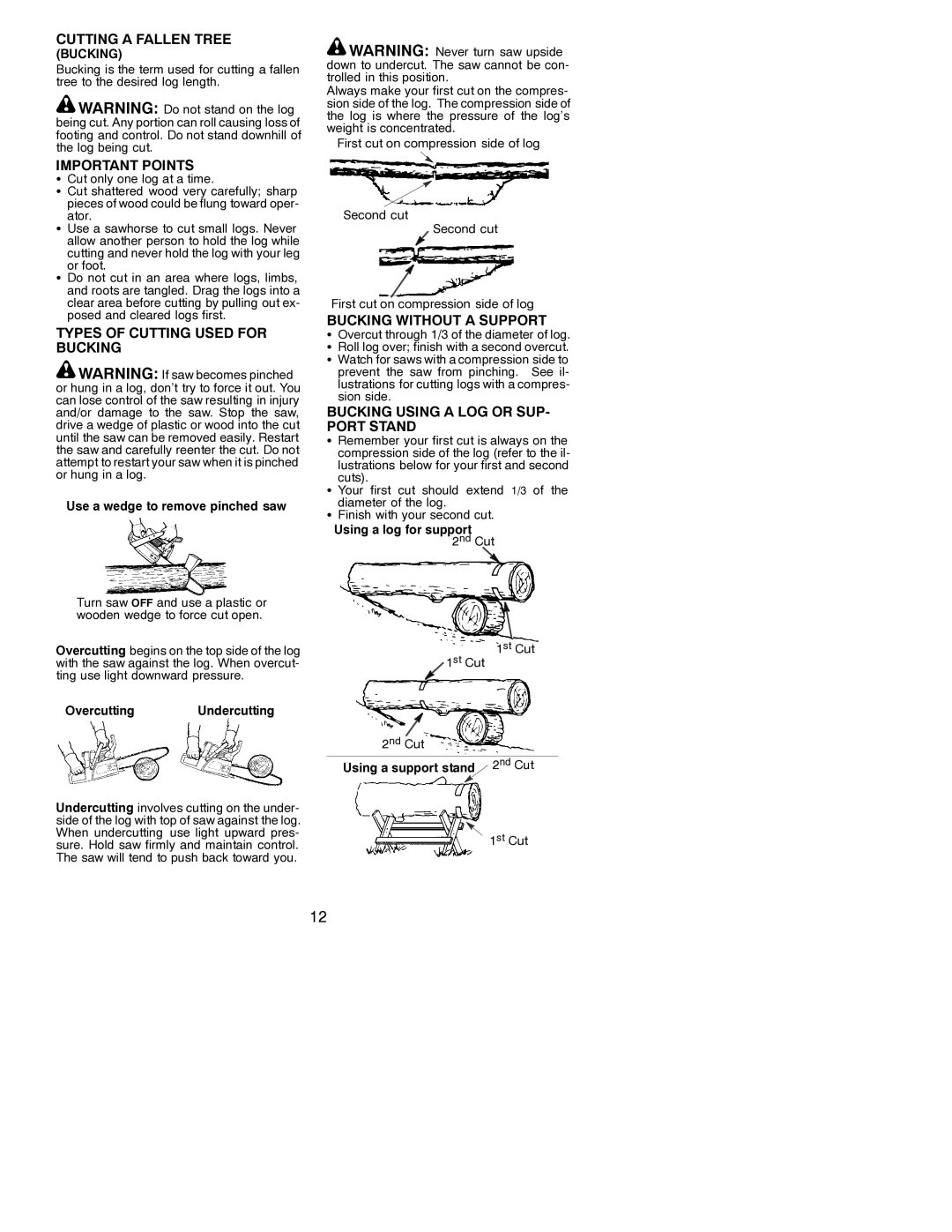3450, 3750 specifications
The Poulan 3450 and 3750 chainsaws are notable models in the Poulan lineup, designed for both homeowner and light professional use. These chainsaws are recognized for their reliability, ease of use, and efficient performance in cutting tasks, making them a popular choice among users.One of the defining features of the Poulan 3450 is its lightweight design, weighing in at approximately 10 pounds. This makes it easy to handle for extended periods without causing significant fatigue. The 3450 is equipped with a 16-inch bar, suitable for small to medium-sized cutting jobs, whether pruning trees or cutting firewood. It is powered by a 34 cc engine that provides adequate power for these tasks while maintaining a balance between performance and fuel efficiency.
The Poulan 3750 model offers a bit more power with its 37 cc engine. This model also features a 16-inch bar, but the additional engine capacity allows for better performance in more demanding cutting conditions. The 3750’s enhanced power makes it an excellent choice for users who require a bit more muscle for larger jobs, while still being manageable for the average homeowner.
Both models incorporate Poulan's patented Easy Start technology, which significantly reduces the effort needed to start the engine. This technology is particularly beneficial for less experienced users, as it requires less pull force compared to traditional chainsaw designs.
Another significant feature of the Poulan chainsaws is their automatic chain oiler that ensures the chain remains lubricated during operation. This helps to prolong the life of the chain and bar, reducing wear and enhancing cutting efficiency. The adjustable oiler also allows users to customize the oil flow based on their cutting applications.
In terms of safety, the Poulan 3450 and 3750 come equipped with a chain brake system that quickly stops the chain in the event of kickback, providing an additional layer of protection for the operator.
With their combination of power, portability, and ease of use, the Poulan 3450 and 3750 chainsaws present an excellent value for homeowners looking for reliable and efficient tools for their outdoor tasks. These models highlight Poulan's commitment to innovation and user-friendly designs, making them a smart choice for anyone needing a dependable chainsaw.

